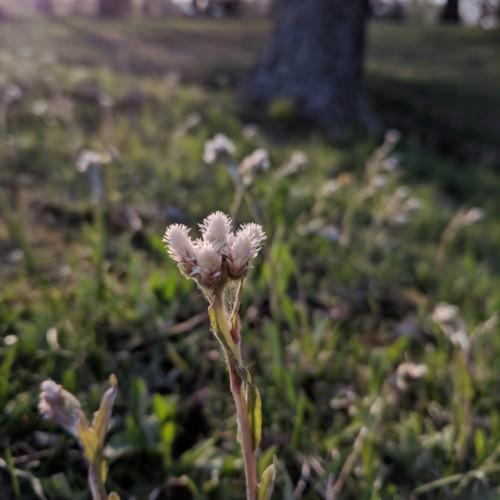
Small Pussytoes
Antennaria howellii
Watering:
Minimal
Hardiness Zone:
Sun:
full sun,part shade
Leaf:
Yes
Growth Rate:
Low
Drought Tolerant:
Yes
Salt Tolerant:
Yes
Care Level:
Easy
watering
Fries' Pussytoes does not require much water, but watering once or twice a month during the growing season is recommended. The best time to water is in the morning, when temperatures are cooler and the sun is not shining directly on the plant. Water the plant until the soil is moist but not soggy. In drier climates, additional watering may be needed. During the winter, water less often, as the plant may not require additional water if the soil is already moist.
sunlight
Fries' Pussytoes generally grows best in full sun, although it can tolerate some light shade. This plant species enjoys at least 6 hours of direct sunlight each day, with a maximum of 8–10 hours. Depending on the season, ideal times of day for this much sun exposure range from around 8am – 6pm, or 9am– 5pm, accounting for the changing position of the sun throughout the year. Ideal conditions should simulate full sun, with a few hours of dappled shade during the midday in summer.
pruning
Fries' Pussytoes should be pruned in the late spring or early summer, removing any dead or diseased stems at the base of the plant. Prune any stems that are long and flowering, as these may be displacing the new growth. For best results, prune the plant lightly and only take off the more unruly stems. Monitor the plant and prune it again if you deem it necessary.
